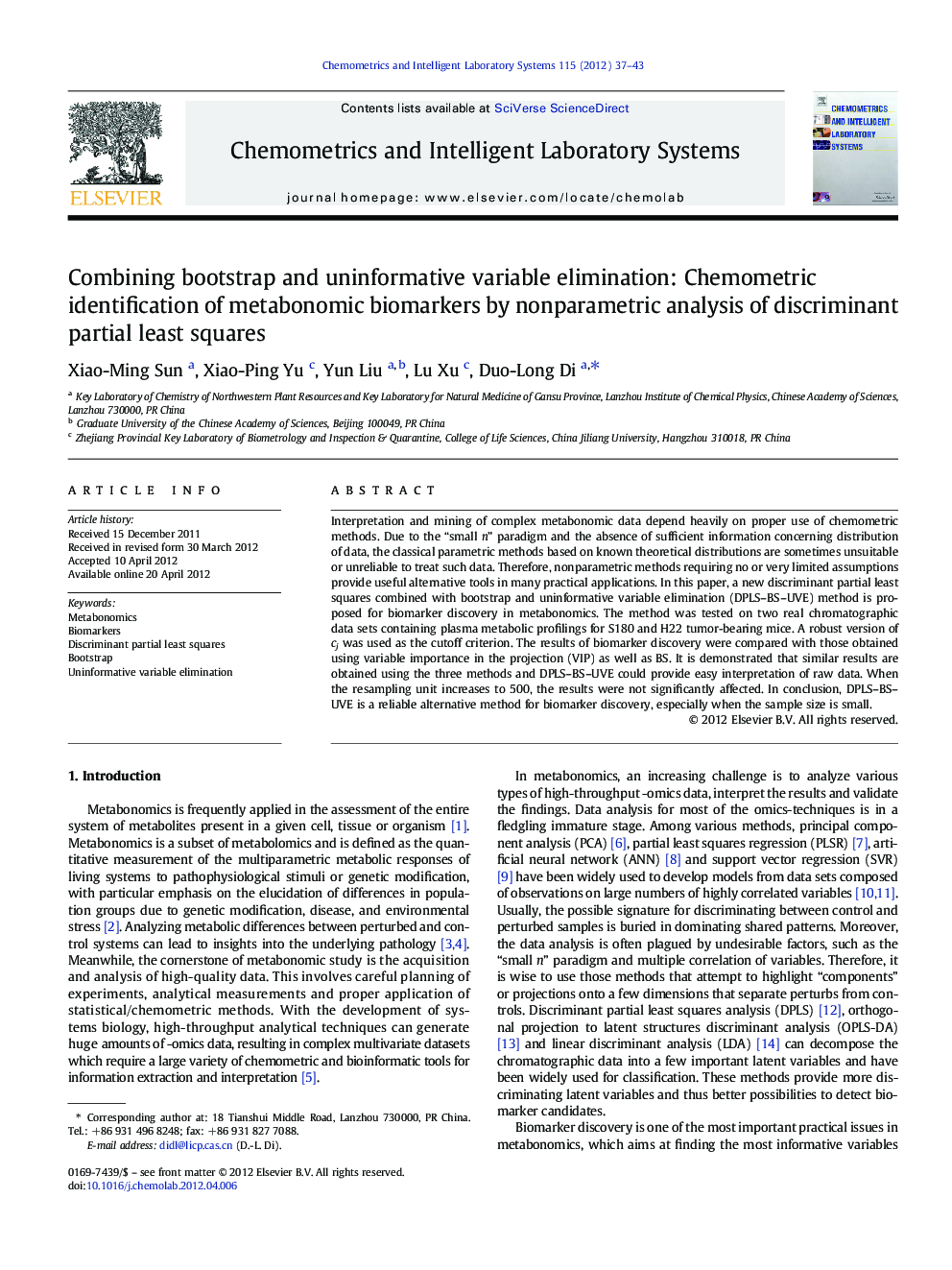| Article ID | Journal | Published Year | Pages | File Type |
|---|---|---|---|---|
| 1179659 | Chemometrics and Intelligent Laboratory Systems | 2012 | 7 Pages |
Interpretation and mining of complex metabonomic data depend heavily on proper use of chemometric methods. Due to the “small n” paradigm and the absence of sufficient information concerning distribution of data, the classical parametric methods based on known theoretical distributions are sometimes unsuitable or unreliable to treat such data. Therefore, nonparametric methods requiring no or very limited assumptions provide useful alternative tools in many practical applications. In this paper, a new discriminant partial least squares combined with bootstrap and uninformative variable elimination (DPLS–BS–UVE) method is proposed for biomarker discovery in metabonomics. The method was tested on two real chromatographic data sets containing plasma metabolic profilings for S180 and H22 tumor-bearing mice. A robust version of cj was used as the cutoff criterion. The results of biomarker discovery were compared with those obtained using variable importance in the projection (VIP) as well as BS. It is demonstrated that similar results are obtained using the three methods and DPLS–BS–UVE could provide easy interpretation of raw data. When the resampling unit increases to 500, the results were not significantly affected. In conclusion, DPLS–BS–UVE is a reliable alternative method for biomarker discovery, especially when the sample size is small.
► DPLS-BS-UVE method was firstly used for biomarker discovery in metabonomics. ► The method is especially effective for the small dataset. ► The results were not significantly affected when the BS unit increases to 500.
